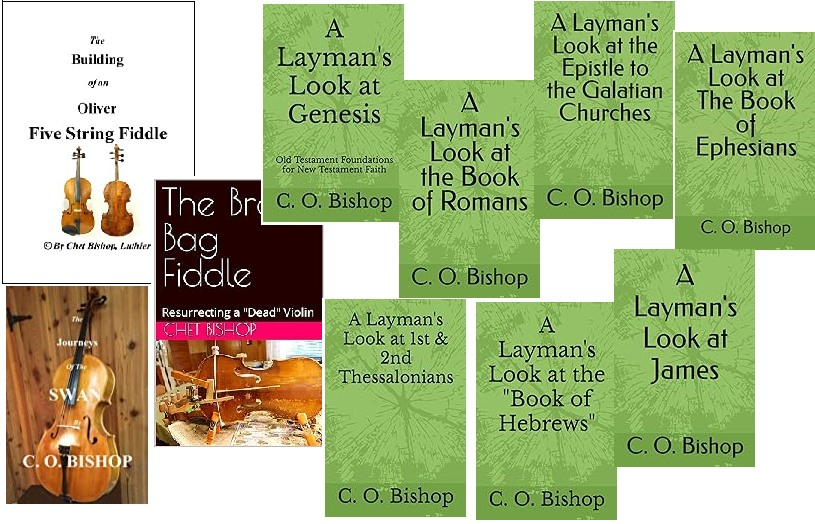Teaching and “How-to Books” (Now in audio!)
Bible Commentaries: “A Layman’s Look…”
First of all, these are serious commentaries on various books of the Bible, using the King James Version, for reference. I believe the Bible is the genuine Word of God, therefore, in these commentaries, I unfailingly treat it that way. (Obviously, some people may reject this idea, but that is how I view the Bible: therefore, that is the way I teach it.)
To begin with, I entitled the overall series, “A Layman’s Look:” because I do not claim any high credentials or degrees. However, for over fifty years I have actively studied the Bible, including about four years of formal schooling in the Bible and in ministerial training. Consequently, I always teach both Bible content and application, if possible. In addition, for the last 45 years, I have written all of my notes in notebooks or (more recently) in my computer. However, this year (2019), I’m finally beginning to compile the notes into comprehensive expository commentaries. Obviously, I do so with the hope that they will be helpful to the readers.
Each of the Bible-teaching books is available as a paperback, as a Kindle e-book, as an Audiobook, or on Kindle Unlimited. I can’t control printing prices, but paperbacks are much less expensive than hardbound books. Kindle and Audiobooks are cheap, and Kindle Unlimited is a monthly fee, and you can read all you want. In the case of Kindle Unlimited, I get pennies per book. On the audio and e-books, as well as the paperback books, I get about three dollars (more or less, varying with the size and price of the books.) Obviously, I am not in it to make money. And when people in third-world countries can’t afford them, if they contact me, I will work something out for them.
Each (blue) book title below is a link to the Amazon location where it is available.
1: Galatians:

“A Layman’s Look at the Epistle to the Galatian Churches” came first, as my first completed and published commentary. It is a 56,000+ word, verse-by-verse and idea-by-idea treatment of Paul’s letter to the churches in the province of Galatia. However, these churches faced a problem: a group of false teachers were subverting the faith of the new believers, telling them that they had to obey the Jewish law and traditions to be saved. Today we call this idea “legalism.” Obviously, this same concept still arises today, quite frequently, so, the Book of Galatians is still just as pertinent today as it ever was.
204 pages in printed form (about 56,000 words.)
2: Ephesians:

The Book of Ephesians is a “Nuts and bolts” tutorial on the Normal Christian Life. In contrast to some of my smaller books, this commentary is a 70,000-word, verse-by verse, and idea-by-idea examination of Paul’s letter to the Church at Ephesus. To begin with, Paul first addressed the Believer’s Position “in Christ.” The Holy Spirit placed the believer permanently “In Christ,” the moment he or she believed. Therefore, certain things are eternally true of him or her, without further conditions.
Afterward, He addresses our “Condition” as believers. (My “condition” can vary wildly, but my “position “is always secure.) Next, he addresses the believer’s “Walk” with Christ: Our relationship with Christ, as well as relationships between believers, husband and wife, employee and employer, etc.. Finally, He discusses the “Warfare” of the believer, and points out that “other humans are not the enemy.” He teaches what the armor of God is, and how to use it. As a result, this is an extremely practical book for Christians to understand and apply to their own lives.
248 pages in printed form (about 70,000 words.)
3: Philippians

This is a smaller commentary (32,900 words), because it is a much smaller epistle: But, it is rich in encouragement, as the book of Philippians is the only epistle with no corrective teaching. It is all blessing and encouragment. This church was the only church which regularly supported Paul.
These people (the original recipients) regularly supported Paul in his ministry. They were very poor, but they desired to be part of his work. Therefore, they supported him financially and materially, working with him to see the Gospel spread around the Mediterranean world. This book teaches the believer how to experience the Peace of God. Romans 5:1 tells how to have peace with God. But Philippians addresses the Peace of God. This, too, is a supremely practical book, as we can learn what is the normal, joyful, peaceful relationship of the believer to the Savior.
116 pages in printed form (about 33,000 words.)
4: Colossians

This is also a fairly small commentary (34,300 words; Colossians only has four chapters.) The Book of Colossians teaches many of the same things as Ephesians, but in more concise form. However, it also addresses some truths about Christ, Himself, that the other epistles do not offer. Jesus is called the Creator here: It says that “All things were made by Him and for Him, and by Him all things consist” ( That last clause literally means, “By Him they hold together.”) Jesus Christ is shown to be all-sufficient, and the believer is shown to be “Complete in Him.”
128 pages in print form (about 34,300 words.)
5: Romans

The theme of the Book of Romans is “the Gospel of God’s Grace.” The Book of Romans gives more thorough teaching about the Gospel and how and why it works, than any other epistle. In it we learn the “bad news” of our lost state, as members of the fallen Human Race. We learn about the “Good News”…what God did to overcome our lostness. We learn how His remedy for our sin is to be received, and how completely efficacious it is. And, we learn that we are permanently Joined to Christ, and fully identified with Him in His death, and Burial and resurrection.
Then we learn in chapter 5, just how completely our new position in Christ has changed our status with God . In chapters 6-8 we see that we are now separated from our old sin nature: it is still there, but it has zero authority over us. We are free to walk with Jesus. Paul answers serious questions about Israel, in chapters 9-11. In chapters 12-16, he teaches us how to live as a believer.
This is a 90,000+ word, verse-by-verse, and idea-by-idea treatment of the whole book of Romans.
313 pages in print form (about 90,000 words.)
6: Hebrews

This is a 81,400 word, verse-by-verse, and idea-by-idea commentary on the whole book of Hebrews.
The Book of Hebrews presents one of the most difficult and one of the most delightful books in the New Testament, especially for Gentile readers, though it primarily addresses the Hebrew professing believers. As Gentiles, we usually fail to be aware of all the central themes and thoughts of Judaism, so this provides some “special education” for all believers.
The Epistle to the Hebrews dips deeply into the “well” of Old Testament history. It makes seven comparisons between the Person of Jesus Christ and various important Old Testament Persons, Practices, or Things. And in every case, it proves Jesus to be superior in every way.
Jesus is Better
The theme of this epistle is “Jesus is better.” The writer lists seven supremacies of Christ, showing His superiority over:
- The Prophets
- Angels
- Moses
- The Sabbath
- The Old Priesthood
- The Old Covenant
- All the Old Testament Sacrifices.
Because it deals with Old Testament truth, it is easy for us, as Gentile believers, to misunderstand. We need to pay careful attention, to see what it actually says, and not misunderstand. As we learn what the book actually teaches, it becomes a source of deep delight, satisfaction, security, and peace.
The Writer also offers seven warnings to those who are just “dabbling:” in these warnings, he speaks to professing believers who have not settled their faith: they are on the verge, but, they are not committed. They have not anchored their faith in Christ. To those persons, therefore, the Writer offers the seven warnings which grow sequentially stronger and stronger, letting them know that they are still in danger, whereas those who have truly placed their dependence on Jesus Christ are eternally secure.
Finally, to the believers, the Writer offers about forty exhortations, encouraging them to live out their faith in Full Obedience to Christ. The book of Hebrews is a total blessing to study. I trust that this book will help others to more deeply appreciate God’s Word. It is a powerful book, and well worth studying.
316 pages in printed form (about 81,400 words.)
7. James

The Epistle of James offers eminently practical counsel: It teaches the concept of how a believer’s faith should change his or her own life, and how it should affect his or her relationships with other people, whether other believers or the unbelievers in the world.
The book of James works from the central theme of “Practical Holiness:” It means “putting shoe leather” on your faith. It warns of the effect it will have on other people when we fail to live out that “Practical Holiness.”
James also spells out how to recognize God’s wisdom, and how to spot wisdom that does not come from God. James offers only one short portion to unbelievers: the rest is all very practical, “nuts and bolts” teaching to believers, on the practical outworking of genuine faith.
This book, “A Layman’s Look at the Book of James” offers a verse-by-verse, idea-by-idea study of the Epistle of James. It speaks at a “popular level:” It is easy to understand and absorb. It is a study-book, but not a scholastic work: not a “textbook.” It is meant to teach any interested person to understand God’s Word.
190 pages in print form (about 52,000 words)
8. Genesis
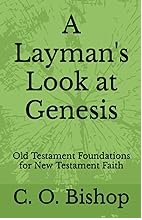
We teach the Book of Genesis as “The Book of Beginnings.” Genesis provides the foundation for all the rest of the Bible. Any believer who can gain a good understanding of the Book of Genesis, will be well on the way to understanding all the rest of the Bible. Genesis contains (in seed form) nearly all the major doctrines of the Bible. In addition, it gives a tightly packed history of “how we got to where we are today.”
Jesus taught the account of the Creation, and He taught it as history, not myths or folklore. He taught it as fact, not fiction. Jesus and the Apostles said Moses was the writer. They taught the Great Flood of Noah’s day was a fact of history: therefore I teach it that way as well. (One can never go wrong by being in agreement with God.) As it happens, geology and archaeology provide ample proof for the historicity of Genesis, as well.
Foundational Truth
The World continually attacks the Book of Genesis. They insist that it is “all mythology.” This remains a central issue to their attack: Genesis is the foundation of our faith. If you throw it out, then all the rest of the Bible is suspect, as well. But Jesus said it is God’s Word. The Apostles said the Bible is God’s Word, not originating with Man. And, they all agreed that ALL of it was Divinely inspired. So, we must either accept that it is truly God’s Word, or we must claim that our own wisdom exceeds that of Jesus. In that case, we will arrogantly appoint ourselves the judges of which parts are inspired and which parts are not.
This commentary is 118,000 words…460+ pages. It is intended to provide a good understanding of the entire book of Genesis and how it relates to the rest of God’s Word, the Bible.
9. 1st & 2nd Peter
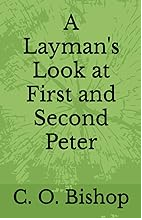
The Apostle Peter wrote the twin Epistles called First and Second Peter. God inspired him to do so. God provided to Peter all of the “heavy doctrine” revealed in these epistles. He did so by revelation, but all of the content confirms all the things that Jesus had taught him in Person. Remember: the writer was Peter, but the Author is God. (Imagine a servant carrying feed to a flock: Peter was just the fellow delivering the food. God provided that food.)
This is God’s letter to You, just as the other epistles are also addressed to you as a believer. Remember that! In it, He reveals the means by which you have been born again. In it, He gives instructions as to how to grow as a believer.
He does give portions which are of specific interest to Jewish believers. He also gives warnings regarding those that will attempt to corrupt the Church. God especially called out False Teachers for what they are. Furthermore, He spelled out their eventual judgment too! We earnestly desire to rightly divide the Word of Truth, and not be guilty of false teaching.
232 pages in print form. (About 64,000 words)
10. 1st & 2nd Thessalonians
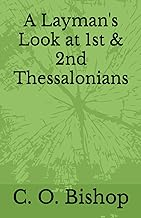
The books of 1st & 2nd Thessalonians were originally letters from the Apostle Paul to the young church at Thessalonica. He had been forced to leave there after only three weeks of teaching, by the riotous response of the unbelieving Jews in the city.
He wrote these letters to help stabilize these “Baby Christians” in their newfound faith and to teach them how to walk with Christ. These two letters are just as valuable to us, as believers today, as they were to those to whom he wrote them, nearly 2000 years ago.
One verse that brings into sharp focus the fact that this message is to us today, is 1st Thessalonians 5:18…”In every thing give thanks, for this is the will of God in Christ Jesus, concerning YOU.” If we consider that the epistles to the churches each make it clear that they are “to all believers,” then we need to see that such commands, encouragements, warnings, etc. are to be taken personally. These letters are to YOU!
194 pages in print form… (About 55,000 words)
11. The Work of The Shepherd

The Work of the Shepherd Book Cover
Ministerial training and expectations can be “all over the scale” from entertainment to psychoanalysis to financial planning and professional-level salesmanship. But not one of these things is on “God’s List.”
God’s primary title for the men he calls “elders, overseers, bishops, presbyters, pastors and shepherds” is… Shepherds, as that is what they are expected to do: Shepherd the Flock of God.
God lays out the “Job description” in several places in the scriptures, as well as the prerequisites, qualifications, and character requirements. Jesus, God in the Flesh, who is called the Chief Shepherd, commanded Peter to “Feed my sheep: tend my Lambs!”
“A Layman’s Look at the Work of the Shepherd” is an attempt to compile the various passages that teach the principles involved, from God’s point of view, and to present them (teach them) in an understandable way.
123 pages in print form (about 32,000 words.)
12. Disciples and Discipleship
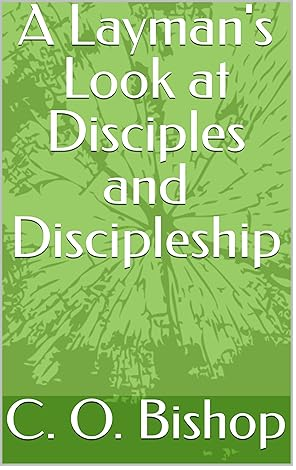
Disciples and Discipleship Book Cover
Discipleship is God’s plan of Evangelism. God has called His people (all of them) to be disciples and to make disciples. Those twin tasks are to be integral parts of the “Christian Life” for all believers.
We need first to understand “what a disciple is,” then, “what is required in being a disciple,” and finally, “what is involved in making disciples.”
This book is an attempt to carefully describe the call to discipleship, as well as the call to make disciples, and how to respond to both. It is designed to be a practical book, not just a scholarly, theoretical treatise. Along with the previous book (“A Layman’s Look at the Work of the Shepherd“), this book (“A Layman’s Look at Disciples and Discipleship”) is intended to provide church leaders with the information and motivation to see their churches transformed into powerful witnesses in their respective communities.
179 pages in print form (about 47,000 words.)
Lutherie books
This will include short booklets, as well as longer works, all available for purchase online. (Each title, in blue, is also a link to the Amazon page for that book):
Books
Building an Oliver Five String Fiddle
My first book on lutherie was a compilation of a series of web log posts, thereby chronicling the building of a commissioned five-string fiddle. I offered it for years as a free .pdf download, but it did not work well on phones, or other small screens as the text was too small to read. So, I have revised and re-formatted the book as an electronic form, and am releasing it as a Kindle book. I hope to offer an online series of lutherie lessons later, in keeping with this style. (Not in audio, as it is largely a photo-essay.)
137 pages, profusely illustrated in photos.

The Journeys of the Swan
Kai Jensesn, a NASA engineer who loved violins, began to build a cello…but he was getting up in age, and his health failed before he could complete his beloved project. Fortunately, years later, long after his passing, his daughter brought the instrument to me to complete it for him, so that she would have her father’s cello to play. As a result, this is the story, step-by-step, of how Kai Jensen’s dream was fulfilled and blossomed into a beautiful cello. In addition it is also the story of how his daughter inherited her father’s joy. And, she named the completed instrument “The Swan,” because the first music it played was Saint-Saen’s “The Swan.” These are the Journeys of the Swan. (Not in audio, as it is largely a photo-essay.)

Customer review:
“This is a sweet story for anyone who has a cello that they love. I remember reading about the Swan cello years ago. Mr. Bishop has told the story of a daughter’s wish to honor her father and of a luthier’s effort to make her wish come true. It’s delightful reading and a lovely tribute to all string instruments.”
Linda Jensen Monk
Booklets
This will probably become a list of articles or short books on resurrecting old fiddles. Obviously there are only two, for now, but more will come. However, these will appear on Kindle for their minimum price.
The Bread Bag Fiddle is a short work (3,800 words, 30 photos) chronicling the transformation of a “junk-store special”…a sadly neglected and abused violin, into the daily player of a gigging fiddler, playing in a professional band. (Not in audio, as it is largely a photo-essay.)

“Resurrection of Another Dead Fiddle” is a little shorter, still, but it includes details of internal structural repairs, as well as replacement of missing rib wood and a full neck-set. The customer had sadly set this one aside and bought a cheap violin on which to practice, but after the repairs shown here, this violin returned to being her daily player. She has become a Happy Customer! (Not in audio, as it is largely a photo-essay.)

Other Recommended Books (Not by me…)

All of Henry Strobel’s Books at https://henrystrobel.com/
If you want to learn to build a violin, Henry Strobel’s book “Violin Making, Step-by-Step” is an excellent place to start. He keyed his other making books (viola and cello) to the book on violin making, so you need the violin book along with the others. Each of those three books also includes a very workable pattern.
Violin Making, Step by Step (Comprehensive)
Viola Making, Step by Step
Cello Making, Step by Step (4/4 & 7/8)
The “Making” books above include full size working drawings.
